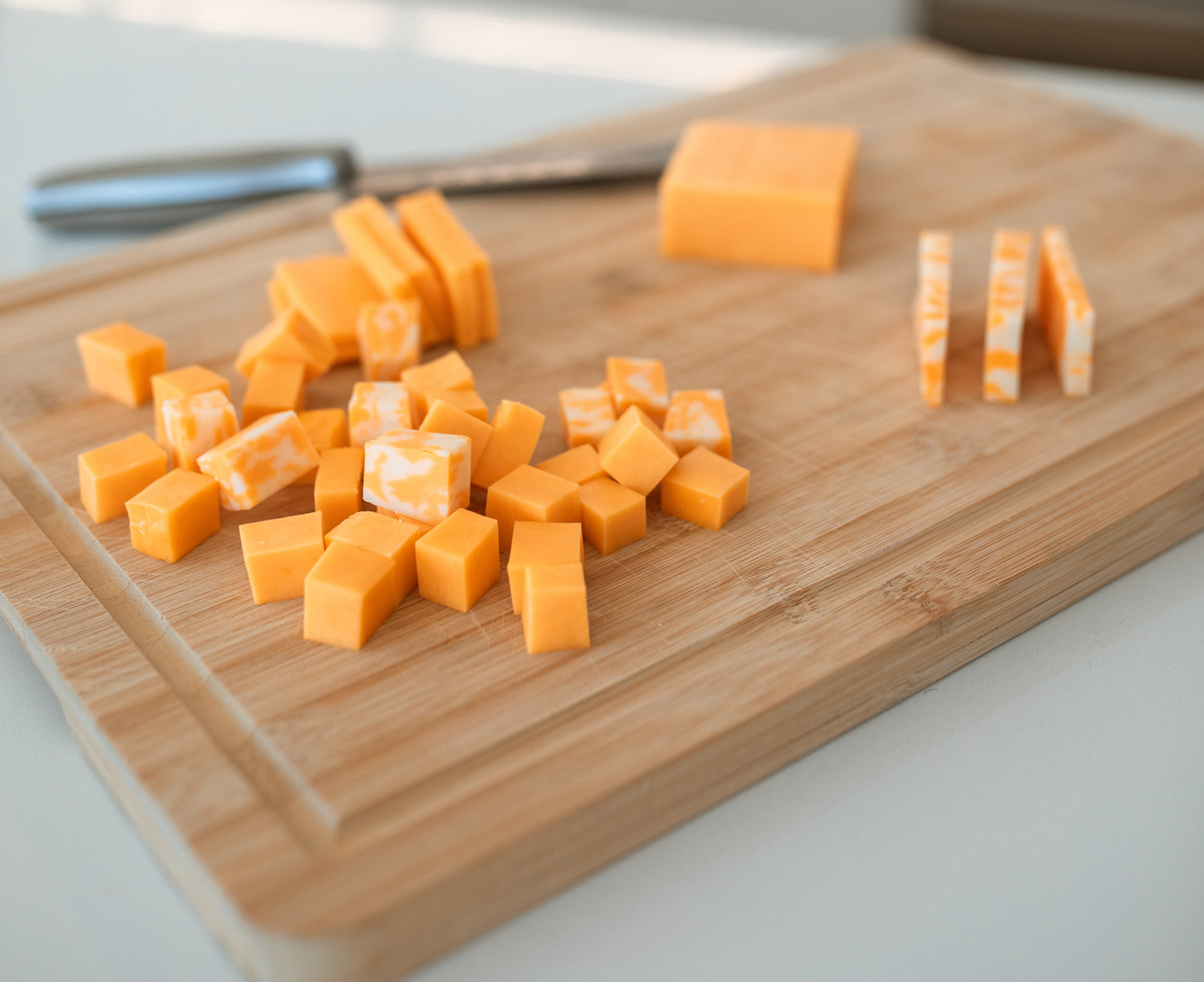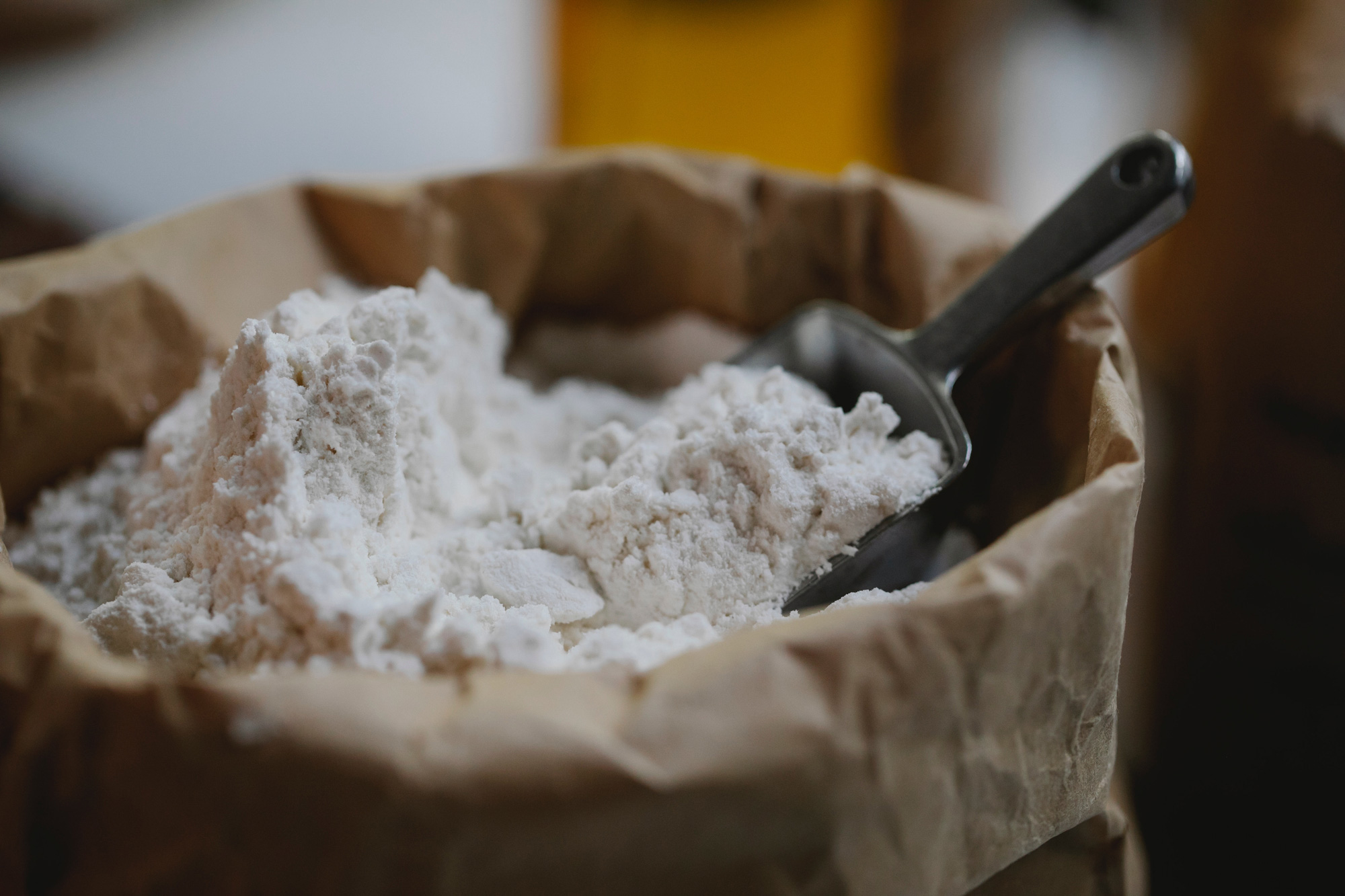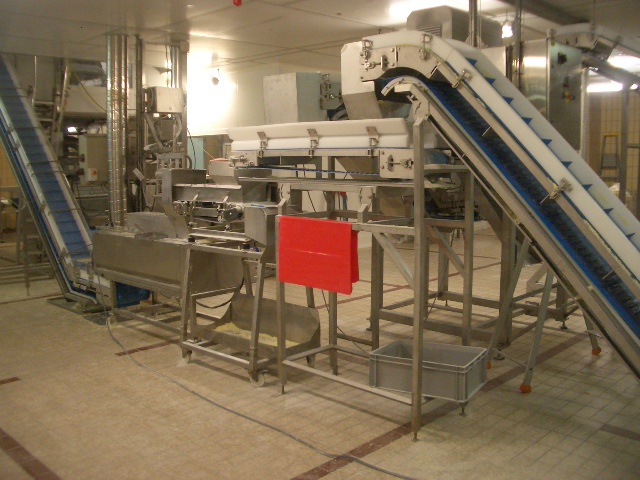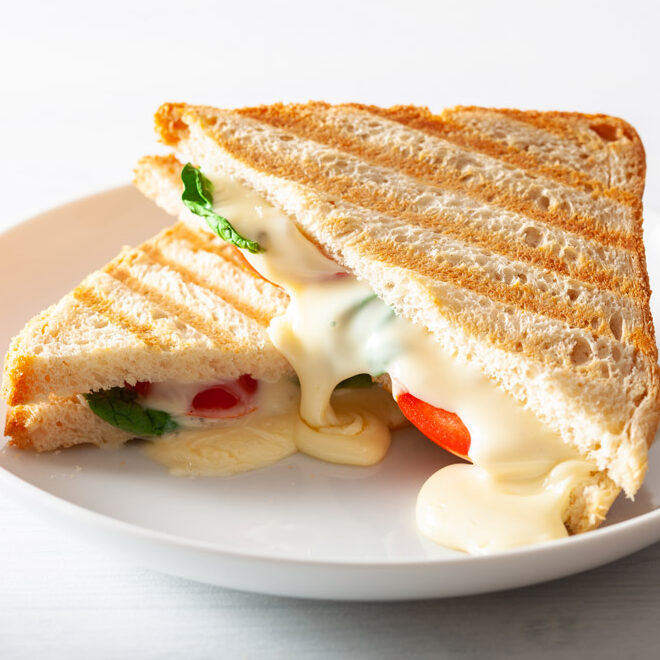

APPLICATION
Dusting of cheese shreds with an anticaking agent
Cheese shreds are either a consumer or semifinished product in the prepared-meal industries. They are coated with an anticaking agent to prevent the accumulation of the shreds after grating and until their use. There are several ways to do it.


BASE
Core products
Shreds are made by grating traditional cheeses (Mozzarella, Emmenthal, Cheddar) or specially processed cheese. It usually has a relatively high moisture and fat content, 30 – 40% each. These amounts cause the accumulation of the cheese after grating, thus showing a defective aspect or preventing further processing in automatic dosing machines.
RECIPE
Ingredients
The powder coating is based either on the following:
- Cellulose, microcrystalline cellulose
- Potato, wheat starch
- Talc, silicide
In some cases, powder flavours can be added to the mix to convey a distinctive aroma profile.






RECIPE
Ingredients
The powder coating is based either on the following:
- Cellulose, microcrystalline cellulose
- Potato, wheat starch
- Talc, silicide
In some cases, powder flavours can be added to the mix to convey a distinctive aroma profile.
PROCESS
How does it work?
The coating process depends on the context. It consists merely in dosing and mixing. It may occur in different ways. The operation may add the powder simultaneously with the cheese in the grating machine. It has drawbacks: accumulation in the machine, pollution outside the device, and uneven distribution. It instead occurs in a dedicated system.
Step 1.
Dosing at a critical point in the system.
Step 2.
Mixing.
PROCESS
Coating system
A dedicated system may consist of a rotary tumbler or a rotating screw whose length and diameter are calculated to accommodate the product flow. The coating relies on the mechanical dispersion caused by mixing.
Dispersion can be enhanced by distributing the powder before its fall onto the product by:
- Blowing air. Electrostatic is recommended to prevent pollution,
- Using a vibratory scarf tray.
The product throughput must be recorded precisely (weight band feeder, for example) to adjust the powder doser. The powder doser can be of the volumetric or gravimetric type, the latter offering better precision and traceability. It is commonly a continuous operation.


PROCESS
Coating system
The twin-screen coating system is inserted in line with the cheese grating and dosing. The rotation speed is adjusted to achieve the required friction and residence time.
The residence time is relatively short, as powders tend to disperse quickly. The cheese is not stored but sent directly to the packaging lines.
PRODUCT EVALUATION
How do you measure your success?
Key quality features
Although obvious, evaluation can be detailed.


Fluidity
The cheese shreds must not pack when pressed. No cheese or powder lumps should remain.
Product integrity
The cheese shreds must remain intact.
Dosage
No powder excess should appear in the packaging.
Key quality parameters
Although a simple process, its application can be resolved in multiple ways but with similar constraints.


Dosage location
Sometimes, the dosage is made during shredding or at the packaging machine. A specific system is recommended.
System design and operation
Multiple systems are suitable. The main design parameter is how the powder is applied to the product, mixed, and controlled.
Dosage
The powder dosage must consistently follow the flow of the product, which is often varying.
APPLICATION
Discover more applications

